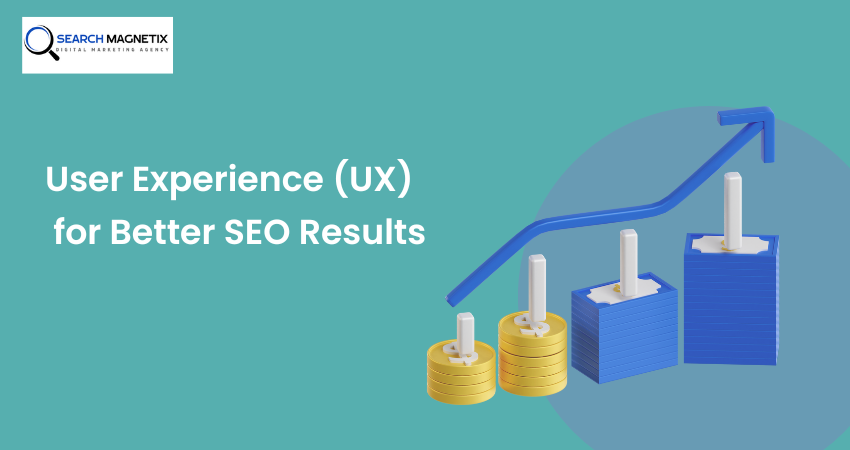When it comes to SEO (Search Engine Optimization) marketers often interconnect it with various aspects such as keywords, Google Algorithms, and many more. However, they often overlook the significance of User Experience (UX) for a successful optimization of search engines.
UX is referred to as User Experience. It offers users a smooth and enjoyable experience as soon as they land on your website. UX is an important aspect of SEO. Therefore, it is essential to understand the intertwined relationship between UX and SEO and how they work hand-in-hand.
In the following guide, you will explore:
- UX and its importance
- The types of user experience
- How are UX and SEO connected?
- How can you create an enhanced web page experience for your users?
UX and Why Does It Matter?
As the name suggests, User Experience or UX defines the process of how people communicate or interact with your website. It reflects the level of satisfaction a person derives from using a product or service. A positive user experience ensures that you can effortlessly achieve your objectives and complete tasks, minimizing any hurdles or uncertainties.
You might have seen this word mentioned in products but we are strictly focusing on the User Experience of a website. With a well-designed UX, users will easily navigate your site and grasp the information they want.
With top-notch UX, it’s like giving your visitors a personal tour guide. They can effortlessly stroll through your website, picking up information they want. No one likes a website that feels like a puzzle – UX is about making sure your visitors never experience that frustration.
You need to be mindful of two things for a seamless user experience:
- Thoughts and,
- Feelings
The Types of User Experience
User experience is what makes your users stay on your website for a long time and navigate the website without experiencing any trouble. Examining the three types of UX design is essential for user experience evaluation in order to fully understand the user requirements. This includes:
- Interaction Design: It is about how users navigate through a site or app. It deals with buttons, menus, and how different elements respond to clicks. Good interaction design ensures a smooth and user-friendly experience.
- Information Architecture: This typeis the organization of content on a website. It’s like arranging books on shelves in a library so that finding what you need is easy. In the digital world, it structures content logically, making navigation effortless for users.
- Visual Design: This type focuses on the appearance of the website that looks good to the end user. It deals with colors, fonts, and images. When a site is visually appealing, it attracts users and keeps them engaged. User Interface (UI) is an important factor of visual design but it is important to note that UI does not define user experience.
Note: UI incorporates your site’s visual elements, which is inclusive of:
- Buttons
- Icons
- Screens
How are UX and SEO connected?
Your website’s credibility is not limited to technical factors. Search engine algorithms also consider the user interaction with your website. Algorithms can find out the time of user interaction with the website. If the user tends to leave your web page within a few seconds, then your site might lose the favor, resulting in low rankings.
To make it more understandable, think of it in this way. Suppose you have searched for something in Google and visited a high-ranking site on Google but the content is not relevant to your search. Or there are too many pop-ups on the screen. This will immediately put you off, thus resulting in a bad user experience.
Therefore, to keep your website in the top ranking, you should always focus on keeping visitors to your website for a long time by providing them with a good user experience. You can also run a Core Web Vitals report to check and correct your requirements.
Create a Better Web Page Experience for Your Users
In this digital era, user experience plays a pivotal role in determining the success of any online platform. By implementing these insights into your website, you can ensure a user-friendly site that will keep your visitors hooked from the moment they arrive.
- Craft your content into several smaller paragraphs.
- Use appropriate heading tags.
- Utilize visual images that describe your content appropriately.
- Optimize your images.
- Use images less than kilobytes.
- Provide useful content.
- Make your website mobile-friendly by testing pages on different digital devices.
- Consider using sliders.
- Use the fonts that are already installed on the desktops of your visitors, or just switch to sans-serif.
- Test your URLs and make adjustments as required.
Moreover, your page’s performance or user experience plays a vital role in improving your site’s SEO. As per Google’s research, focusing on your UX can have several positive impacts:
- Cut down on-site withdrawal by up to 24%.
- Boost the conversion rate of websites.
- Enhance the number of pages viewed on average each session by up to 15%.
- Raise advertising income by at least 18% and even more.
Key Takeaway
User experience is not something that can be overlooked. It plays a vital role in your site’s success. For search engines, user-related metrics are a strong indicator of your website’s quality. It is important to note that your customer experience is much more than just a responsive web design.
As per human behavior, the more choices you present to users, the more difficult it becomes for them to make a decision. So, when people visit your website, they expect you to provide them with a seamless navigation and the answers they are looking for. In addition to raising your website’s search engine rankings, providing a positive user experience on a regular basis builds audience loyalty and trust. Remember that a great user experience is the result of a well-thought-out design, useful features, and educational material.
So, what are you waiting for? If you want to learn about user experience and more about SEO algorithms, reach out to us.









